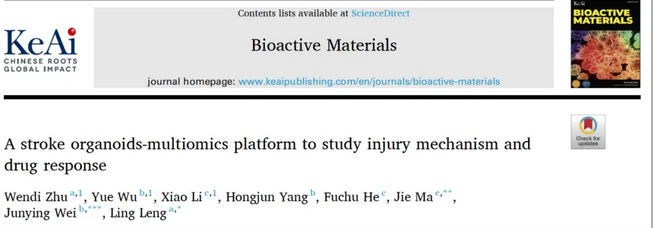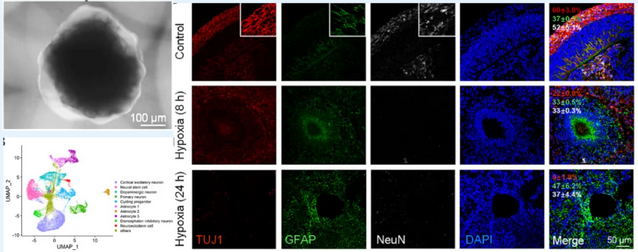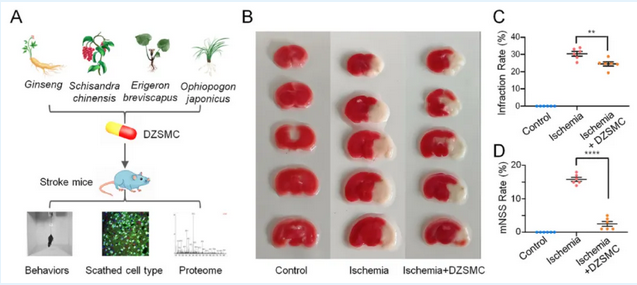Stroke is the leading cause of death among Chinese residents, with its pathogenesis and mechanisms not fully elucidated and no specific therapeutic drugs available. While several drugs have shown efficacy in animal models, the significant differences in brain and physiological functions between human and mice raise questions about their efficacy in humans. Recently, Professor Leng Ling’s team at the Institute of Clinical Medicine, PUMCH used brain organoids to construct an ischemic stroke model to investigate its pathogenesis; through comparative animal studies, the team also identified a possible role of a traditional Chinese medicine formula in ischemic stroke treatment. The findings were published in Bioactive Materials (IF: 18), a journal ranked among the top 5% by the Chinese Academy of Sciences. This research was supported by the National High Level Hospital Clinical Research Funding and the Leading Health Talents Program under the Chinese Academy of Medical Sciences.

Traditional Chinese Medicine (TCM) has long been a treasure for Chinese people. While China has come a long way in new drug development in recent years, clinical research of new TCM drugs still faces many challenges, including lack of clinical evidence and credible clinical data. Evaluation methods well-suited to TCM are urgently needed. Professor Leng Ling explains that the lack of physiological models simulating human brain hypoxic injury has been a bottleneck in developing potential treatments for ischemic stroke. To further elucidate stroke pathogenesis and explore efficacy of TCM formula under safe and ethical conditions, researchers took an innovative approach that leverages organoids.
Professor Leng Ling’s team used human induced pluripotent stem cells (hiPSC) to develop brain organoids modeling ischemic stroke. Then, by combining proteomics, single-cell transcriptome analysis, and histopathological analysis, a significant increase of three types of astrocytes was identified in hypoxic brain organoids and they showed different responses to hypoxic environments. In addition, the excitatory neurons had signs of apoptosis and aging after hypoxia.

▲The physiological model of human organoids simulating hypoxic injury of the human brain
In parallel, researchers collaborated with the Institute of Chinese Materia Medica, China Academy of Chinese Medical Sciences to establish mouse models of ischemic stroke. In both mouse and brain organoid models, they discovered that stroke could lead to various biological processes including imbalance of proteins in the nervous system, cognitive impairment, decreased energy metabolism, DNA damage, and epigenetic disorders. Testing a TCM compound in both models revealed its potential positive effects on ischemic stroke through regulation of lipid metabolism.

▲The potential positive effects of the TCM compound in treating ischemic stroke in mice
Among all stroke types, 87% are ischemic. Professor Leng Ling notes that brain organoids, given their close resemblance to human brains, provide opportunities to study various neurological diseases in vitro. Compared to animal models, brain organoids enable deeper investigation into molecular characteristics and pathological processes of disorders causing human brain injury. This research system, combining brain organoids with multi-omics analysis, not only explored pathogenesis mechanisms of stroke caused by ischemia and hypoxia but also provides new strategies for drug screening.
